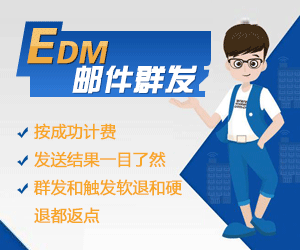Map怎么实现按单个或多个Value排序
本篇内容主要讲解“Map怎么实现按单个或多个Value排序”,感兴趣的朋友不妨来看看。本文介绍的方法操作简单快捷,实用性强。下面就让小编来带大家学习“Map怎么实现按单个或多个Value排序”吧!
Map可以先按照value进行排序,然后按照key进行排序。 或者先按照key进行排序,然后按照value进行排序,这都是可以的。
并且,大家可以制定自己的排序规则。
按单个value排序:
import java.util.Collections;
import java.util.HashMap;
import java.util.LinkedHashMap;
import java.util.Map;
import static java.util.Map.Entry.comparingByValue;
import static java.util.stream.Collectors.toMap;
public class SortTest {
public static void main(String[] args) throws Exception {
// 创建一个字符串为Key,数字为值的map
Map<String, Integer> budget = new HashMap<>();
budget.put("clothes", 120);
budget.put("grocery", 150);
budget.put("transportation", 100);
budget.put("utility", 130);
budget.put("rent", 1150);
budget.put("miscellneous", 90);
System.out.println("排序前: " + budget);
// 按值排序 升序
Map<String, Integer> sorted = budget
.entrySet()
.stream()
.sorted(comparingByValue())
.collect(
toMap(Map.Entry::getKey, Map.Entry::getValue, (e1, e2) -> e2,
LinkedHashMap::new));
System.out.println("升序按值排序后的map: " + sorted);
// 按值排序降序
sorted = budget
.entrySet()
.stream()
.sorted(Collections.reverseOrder(comparingByValue()))
.collect(
toMap(Map.Entry::getKey, Map.Entry::getValue, (e1, e2) -> e2,
LinkedHashMap::new));
System.out.println("降序按值排序后的map: " + sorted);
}
}
按多个value排序:
data = data.stream().sorted(Comparator.comparing(o -> {
StringBuffer key = new StringBuffer();
fieldList.stream().forEach((a)-> {
key.append(o.get(a)+"");
});
return key.toString();
} )).collect(Collectors.toList());
下面的代码中,首先按照value的数值从大到小进行排序,当value数值大小相同时,再按照key的长度从长到短进行排序,这个操作与Stream流式操作相结合。
/**
* Map按照整数型的value进行降序排序,当value相同时,按照key的长度进行排序
*
* @param map
* @return
*/
public static LinkedHashMap<String, Integer> sortMap(Map<String, Integer> map) {
return map.entrySet().stream().sorted(((item1, item2) -> {
int compare = item2.getValue().compareTo(item1.getValue());
if (compare == 0) {
if (item1.getKey().length() < item2.getKey().length()) {
compare = 1;
} else if (item1.getKey().length() > item2.getKey().length()) {
compare = -1;
}
}
return compare;
})).collect(Collectors.toMap(Map.Entry::getKey, Map.Entry::getValue, (e1, e2) -> e1, LinkedHashMap::new));
}
补充:对Map中的Value进行降序排序,当Value相同时,按照Key降序排序
package com.ethjava;
import java.util.*;
public class mappaixu1 {
public static void main(String[] args){
Map<Integer,Integer> hashMap=new HashMap<Integer, Integer>();
hashMap.put(1,10);
hashMap.put(5,7);
hashMap.put(2,9);
hashMap.put(3,7);
hashMap.put(3,6);//key是不可重复的,当这里再次输入Key=3时的,将会覆盖掉前面的(3,7)
hashMap.put(4,7);
//遍历
for(Map.Entry<Integer,Integer> e:hashMap.entrySet()){
System.out.println("Key: "+e.getKey()+"对应的Value: "+e.getValue());
}
//Key: 1对应的Value: 10
//Key: 2对应的Value: 9
//Key: 3对应的Value: 6
//Key: 4对应的Value: 7
//Key: 5对应的Value: 7
//这里为什么自动按照key升序排序输出???为什么
// 某梦说,这里是因为凑巧正序输出,hashMap输出相对于输入是无序的。
//下面按照Value进行倒序排列
ArrayList<Map.Entry<Integer,Integer>> arrayList=new ArrayList<Map.Entry<Integer, Integer>>(hashMap.entrySet());
Collections.sort(arrayList,new Comparator<Map.Entry<Integer,Integer>>(){
@Override
public int compare(Map.Entry<Integer,Integer> o1,Map.Entry<Integer,Integer> o2 ){
//按照Value进行倒序,若Value相同,按照Key正序排序
//方法1:return o2.getValue() - o1.getValue();
//方法2:return o2.getValue().compareTo(o1.getValue());//对于Integer,String都是可以应用的
//按照Value进行倒序,若Value相同,按照Key倒序排序
int result = o2.getValue().compareTo(o1.getValue());
//方法学习:public int compareTo( NumberSubClass referenceName )
//referenceName -- 可以是一个 Byte, Double, Integer, Float, Long 或 Short 类型的参数。
//返回值:如果指定的数与参数相等返回0。
// 如果指定的数小于参数返回 -1。
//如果指定的数大于参数返回 1
if(result!=0){
return result;//即两个Value不相同,就按照Value倒序输出
}else{
return o2.getKey().compareTo(o1.getKey());}
//若两个Value相同,就按照Key倒序输出
}
});
//这里arrayList里的顺序已经按照自己的排序进行了调整
for(int i=0;i<arrayList.size();i++){
System.out.println(arrayList.get(i));
//方法一和方法二输出:
//1=10
//2=9
//4=7
//5=7
//3=6
//当按照Value倒序排序,但是当Value相同时,按照Key顺序正序排序
//方法二
//1=10
//2=9
//5=7
//4=7
//3=6
//当按照Value倒序输出,但是当Value相同时,按照Key倒序输出
}
for(Map.Entry<Integer,Integer> e:hashMap.entrySet()){
System.out.println(e);
//1=10
//2=9
//3=6
//4=7
//5=7
//这里表明hashMap中存取的内容顺序并没有进行任何改变,改变的是arrayList里的内容的顺序
}
}
}
相关内容
这些是最新的
热门排行
- THINKPHP5+GatewayWorker+Workerman 开发在线客服系统
- 在手机浏览器网页中点击链接跳转到微信界面的方法
- 尊云网站目录系统 ThinkPHP5网站分类目录程序 v2.2.221011
- CentOS 7安装shadowsock(一键安装脚本)
- AdminTemplate 基于LayUI 2.4.5实现的网站后台管理模板
- 用NW.js(node-webkit)开发多平台的桌面客户端
- PHP生成随机昵称/用户名
- THINKPHP5网站分类目录程序 尊云网站目录系统
- 织梦(DEDECMS)微信支付接口 微信插件
- 基于LayUI开发的 网站后台管理模板 BeginnerAdmin
- 响应式后台网站模板 - AMA.ADMIN
- layuiAdmin后台管理模板 Iframe版
- LayUI 1.0.9 升级 至 LayUI 2.1.4 方法
- 简洁清爽的会员中心模板
- jQuery幸运大转盘抽奖活动代码



